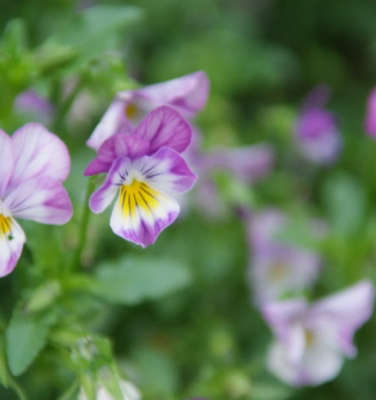

Not to be confused with their showier cousin the pansy, sweet violets (the flower of Eliza Doolittle) have a heavenly scent and hide in the springtime lawn beneath trees. A quintessential woodland flower, welcome in any garden, violets will spread through runners to create a charming ground cover if you treat them well.
Violets prefer damp, well-drained ground, and the sun-dappled protection of woodlands. The most common varieties range from purple sweet violet (Viola odorata), to dog violets such as the larger North American violet (V. cucullata), to V. labradorica ‘Purpurea’, which has purple leaves.
With more than 500 varieties of Viola (which includes the large-flowered pansy that goes by the name V. wittrockiana), you can find one to match any color palette.
Violet’s flowers can be purple, blue, white, red, pink, orange, and yellow, all of which look charming in clumps at the front of a garden bed. But be warned. These self-seeding flowers often produce hybrids that look nothing like what you originally planted. Enjoy the surprise.